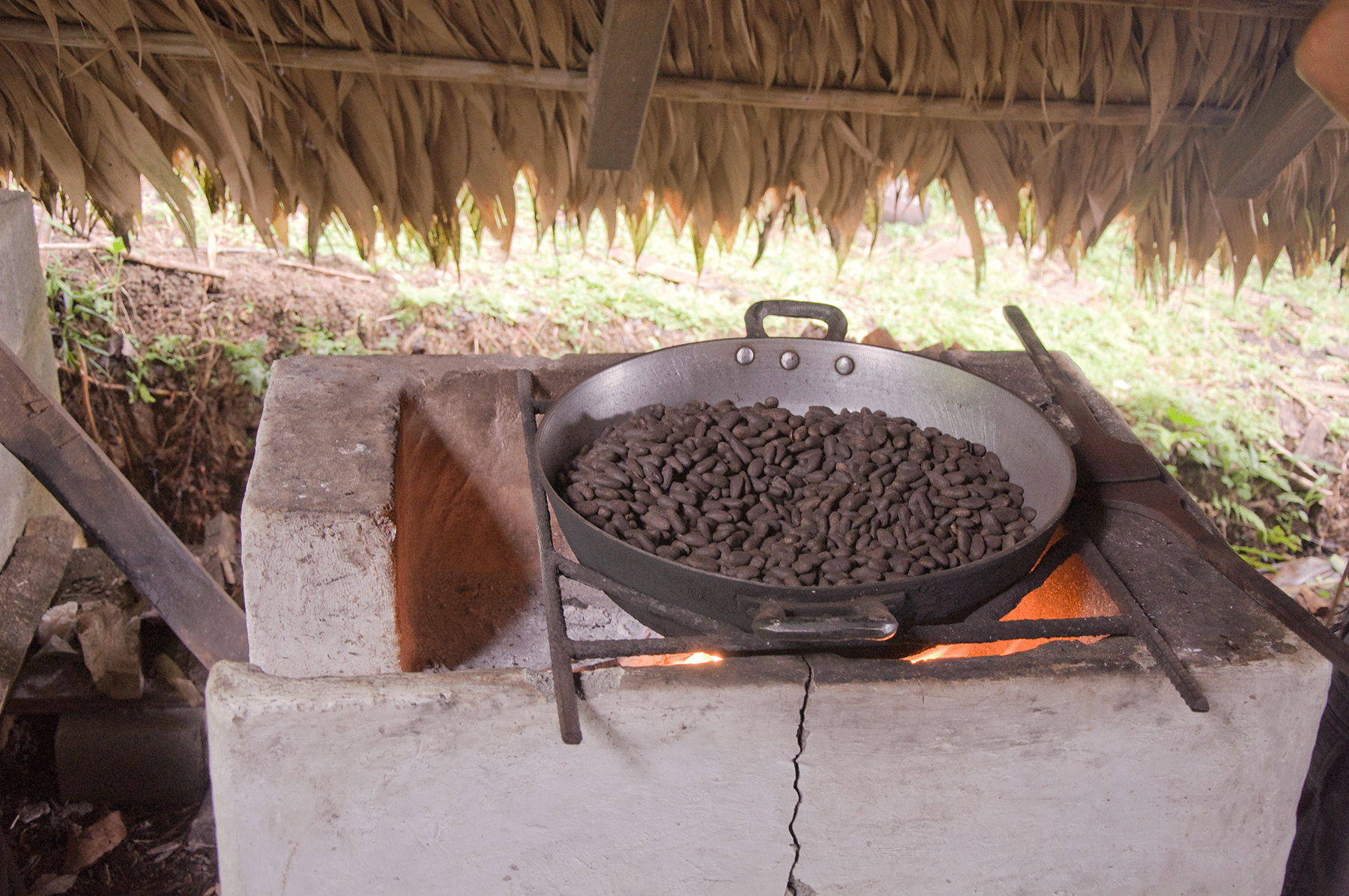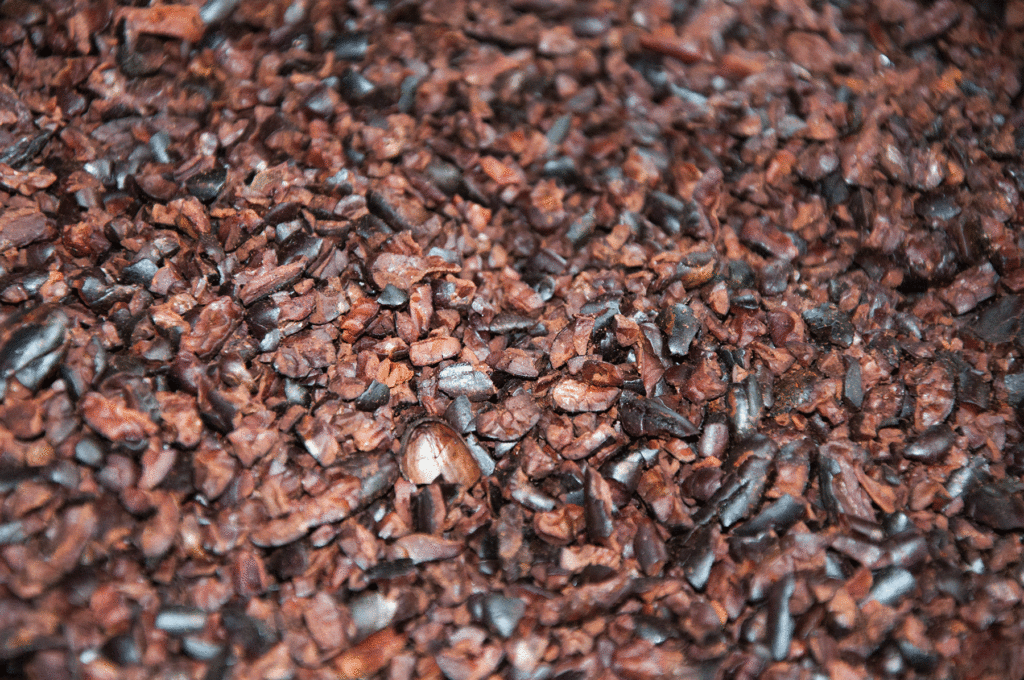In my last post, The Cultivation of Cacao I talked about where chocolate comes from and how farmers grow and harvest cacao pods for the sale of their beans. Although the majority of chocolate is produced thousands of miles from where it’s grown and usually in mass quantities using large equipment, some farms actually produce their own chocolate. Like this one! Here at ChocoRart, in Costa Rica we had the pleasure of learning exactly how it’s done, down on the farm style. After harvesting, fermenting and drying where I last left off, we begin with the roasting of the dried beans over an open fire. Ahhhh.. the smell!
Roasting is done here over an open flame with the beans being stirred frequently to ensure even heat distribution and prevent scorching. This is a very important step in the process of chocolate making, further developing the flavors and aromas of the beans, bringing them to their full potential. Hence the smell!! The heat dries both the shell and inside of the bean, making it easier for later separation of the two. Roasting times may vary anywhere from 30min to 2 hours depending on the temperature and type of bean.
 The next step is to crack the beans which is also called husking, or kibbling. Marco, the farmer demonstrates how they do this manually using a large shapely rock. A process which is normally done by machine called a winnower.
The next step is to crack the beans which is also called husking, or kibbling. Marco, the farmer demonstrates how they do this manually using a large shapely rock. A process which is normally done by machine called a winnower.
 After this he separates the shells(husks), from the nibs, which are the inside of the bean. He does this by pouring the cracked beans in front a fan, the husks blow beyond the bowl and onto the cloth, while the nibs land in the bowl.
After this he separates the shells(husks), from the nibs, which are the inside of the bean. He does this by pouring the cracked beans in front a fan, the husks blow beyond the bowl and onto the cloth, while the nibs land in the bowl.
The winnower cracks whole beans by throwing them against a steel wall using a heavy force and then a fan blows the husks one way, while the nibs another.
While the winnower is likely way more efficient, amazingly enough this manual process worked pretty well. Although any husks that make it into the bowl must be picked out by hand after the fact.
Finally, what we are left with are the nibs. Cocoa nibs are composed of cocoa solids and cocoa butter, these are what is actually used to make chocolate!
 Who knew it was so much work just to get this far!?
Who knew it was so much work just to get this far!?
Here the nibs enter a grinding mill, with a hand crank. This crushes them into a thick paste called chocolate liquor, which in fact contains no alcohol. Again with the manual labor! Marco even convinced a local guide to give it a try, but not for long.
While this is taking place a type of molasses sugar they use, is cooked to liquid form over the fire. When both are ready the liquid sugar is poured through a fine mesh sieve into the chocolate liquor paste and mixed. After the two are fully incorporated it’s ready for a taste! Keeping in mind that this is unprocessed chocolate, with only minimal sugar added. At this point it tasted like warm brownie batter! Delicious but grainy unlike the silky smooth chocolate we are a custom to.
Once the mixture cools it is rolled into small cigar shaped logs, each to be wrapped in wax paper. Here at ChocoRart they make at least six different kinds of these chocolate logs. Flavors are introduced into the sugar while it is cooking such as vanilla beans or coffee grounds. Additions can also be made to the final mixture to add texture like shaved ginger or cocoa nibs. We tried all of these which were equally as delicious! Finished products are not only sold on the farm to guests but also at various markets and cafe’s around the town of Puerto Viejo where they live.
I hope now, like me you have a better appreciation for chocolate and how it is made! If you are interested in more photos from this trip please visit my Facebook album.



